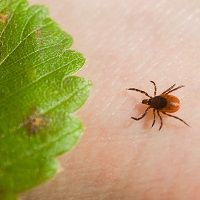Article
False-Positive Lyme Disease Results Reinforce Importance of Second Test
Author(s):
While Lyme disease cases tend to peak during the summer months, the threat is not over once the weather cools down. But as recently discovered, a single test may not be enough for an accurate diagnosis.

While Lyme disease cases tend to peak during the summer months, the threat is not over once the weather cools down. But as recently discovered, a single test may not be enough for an accurate diagnosis.
Lyme disease can be accompanied by nonspecific symptoms, such as joint pain, skin rash, and fatigue, which makes diagnosing the condition challenging. A Canada-based team discovered that it may be difficult to identify the illness even with laboratory testing. An analysis showed that a substantial percentage of patients receive a false-positive test result and advised how healthcare providers should handle such cases.
“Patients with chronic symptoms without a diagnosis can be vulnerable and desperate for an answer as to the cause of their illness,” Dan Gregson, MD, divisions of Medical Microbiology and Infectious Disease, departments of Pathology and Laboratory Medicine, and Medicine at the University of Calgary, said in a news release.
The Centers for Disease Control and Prevention (CDC) says that Lyme disease is diagnosed based on symptoms and history of tick exposure. Blood tests are only correctly positive 65% of the time and should therefore only be incorporated for those who show signs. “Giving them a false diagnosis based on flawed testing is misleading,” Gregson affirmed.
If left untreated, Lyme can cause further complications like arthritis and facial paralysis, which is one of the many reasons that accurate diagnoses are important.
The team found that three out of four commercial US laboratories had false-positive results for people without Lyme disease. What may be even more alarming is that the rate of the false-positive results ranged from 2.5% to 25% of cases, with one of the labs exhibiting more than 50% inaccurate results. Many of the labs used a single nonevidence-based test, like the Western blot test, and therefore, it doesn’t seem like one isn’t enough.
“Patients and physicians should be cautious in choosing a referral laboratory in the US when seeking ‘second opinion’ serology after receiving a negative test result in Canada,” the authors wrote in CMAJ (Canadian Medical Association Journal).
So if symptoms don’t give a clear indication, and even blood tests are not accurate every time, what should healthcare providers do?
“Laboratories that use the standard CDC two-tier algorithms should be preferred over those that report results based on unproven, unvalidated, in-house criteria,” the authors concluded.





